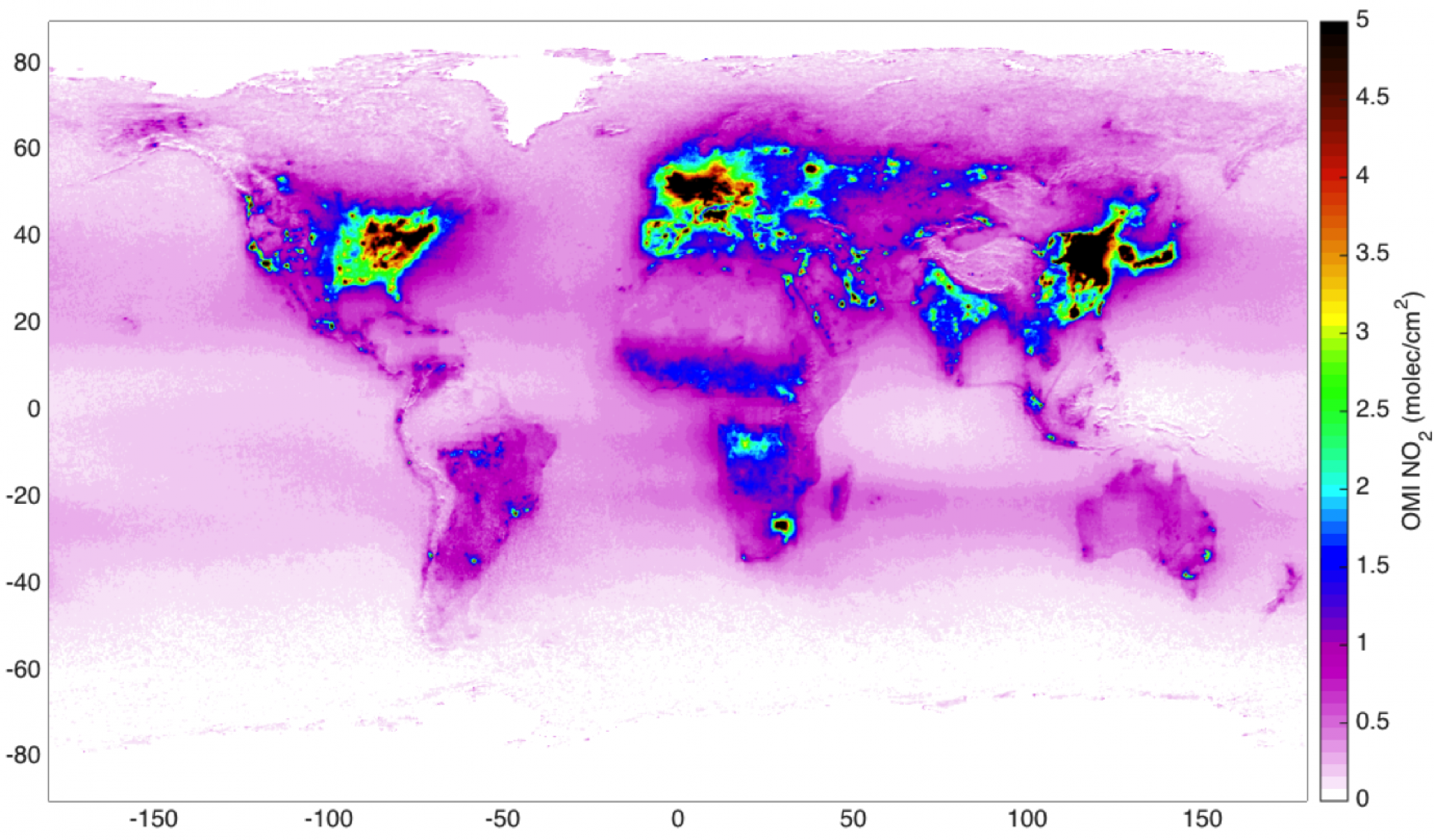Let’s take a moment to celebrate. Or self-celebrate.
In a researcher’s life there are really a few moments when everybody, or even somebody, recognise your achievements. When it happens, you mostly feel ashamed of your own success. But today, let’s try another way.
Helsingin Sanomat today published an interview to Johanna and me, including many of my OMI NO2 pictures to monitor air pollution. You can find the article here (in Finnish): https://www.hs.fi/ulkomaat/art-2000005411483.html
My favourite visualisation is the before/after global map of tropospheric NO2, where you can compare the pollution levels in 2005 and 2016. It’s clear how air pollution increased in India and Middle-East, while decreased in US and Europe. Also in China, the most polluted area in the world, pollution started decreasing a couple of years ago as a result of new environmental policies to protect air quality and the health of the local population.
Before I even had the opportunity to open my computer, I found several post on Twitter, with my pictures going everywhere. We also had the thrill to see our article as the most read for a couple of hours.
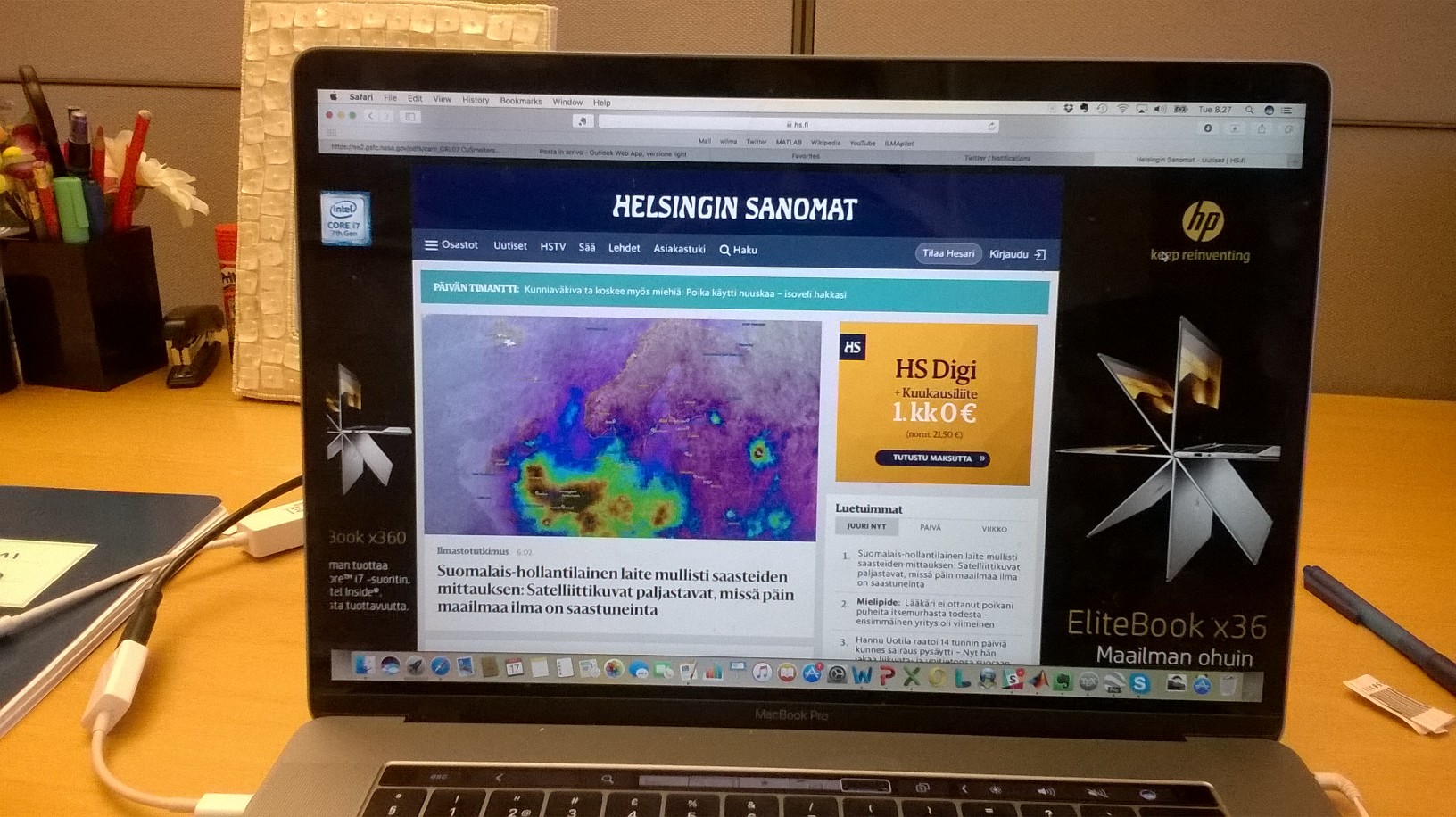
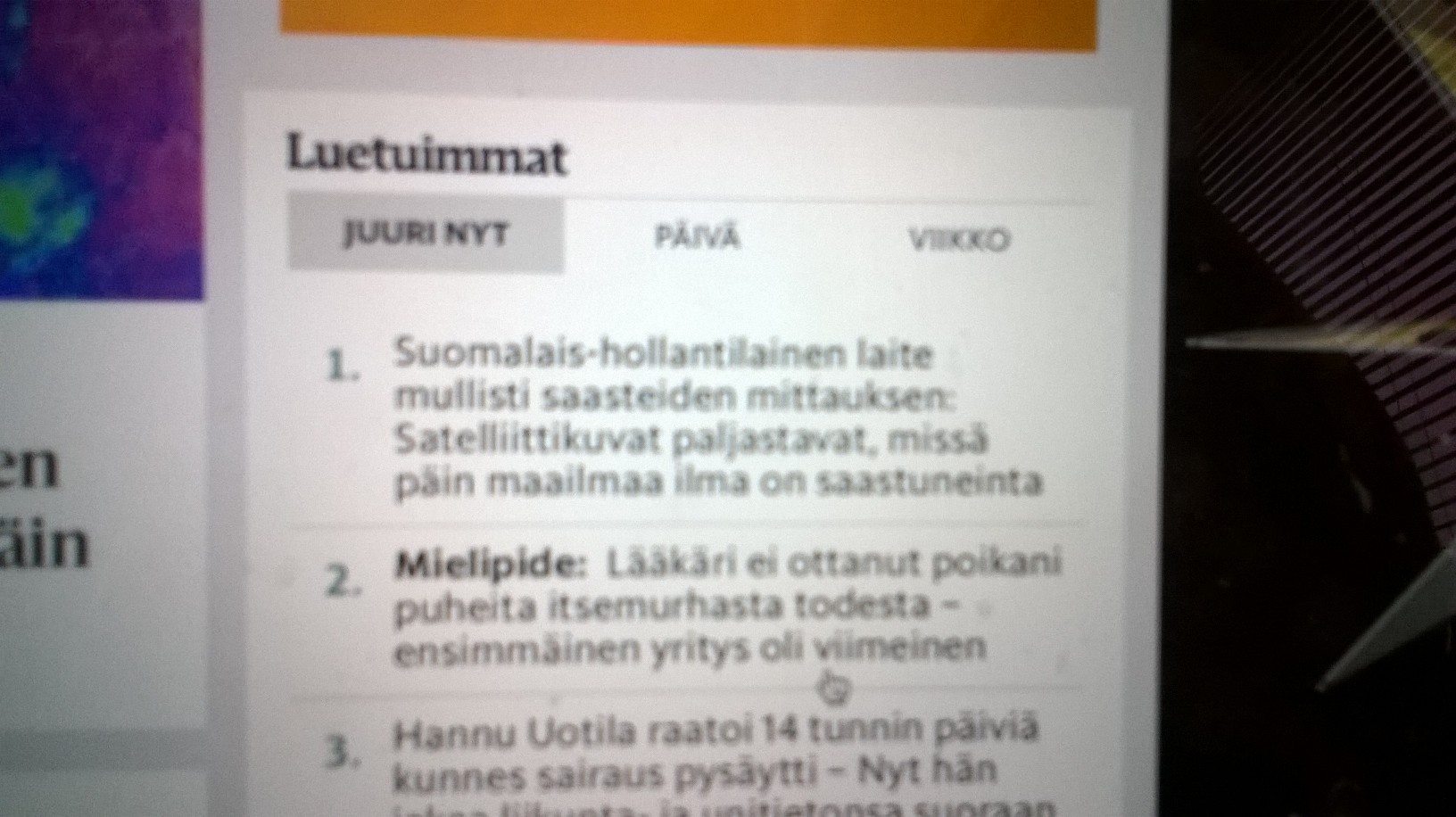
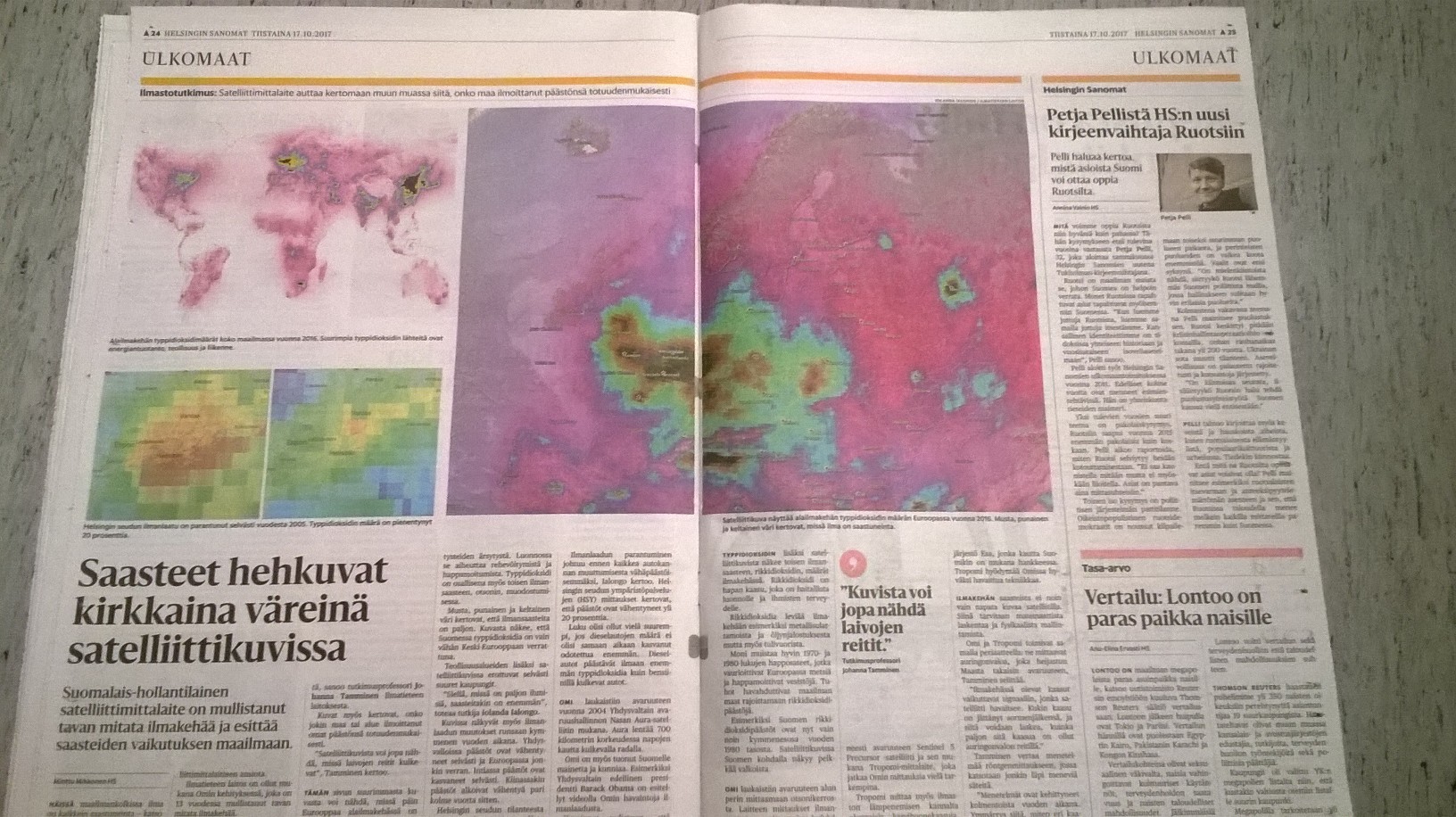
And then the Sun became red.
We woke up this morning here in Southern Finland, experiencing something unusual. The smoke from Iberian forest fires and the desert dust from Northern Africa got transported by the Ophelia hurricane towards Northern Europe and affecting the atmospheric composition there. Seppo from our group came out with a quick press release (in Finnish) on FMI homepage, using SEVIRI and, later on, OMI satellite observations of atmospheric particles. Soon after, his words were on MTV3 webpage: https://www.mtv.fi/uutiset/kotimaa/artikkeli/aurinko-varjaytyi-punaiseksi-metsapalojen-hiukkasista-ja-saharan-hiekasta-etelarannikolla/6620780
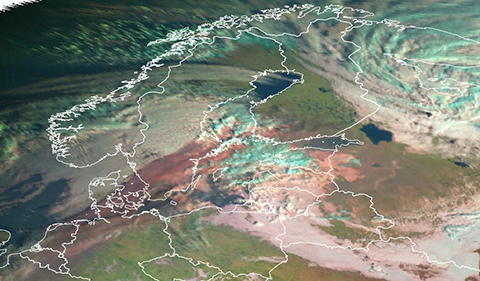
By coincidence, today there was another interesting article on Helsingin Sanomat about the poor communication skills and readiness of Finnish researchers: https://www.hs.fi/kotimaa/art-2000005411521.html. The article went on talking about the fact that finnish researchers are not used to communicate their results nor they like to do it.
Well, just for today, we beg to differ.
